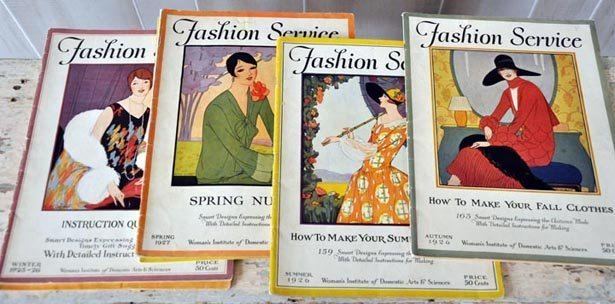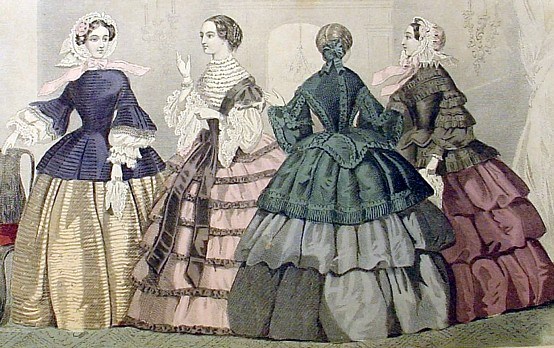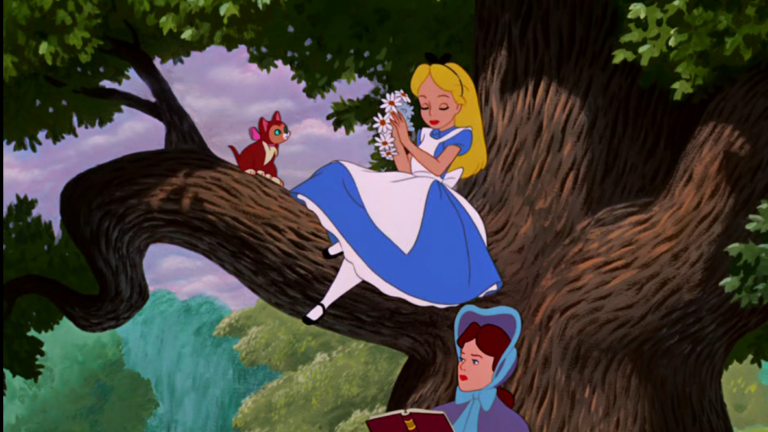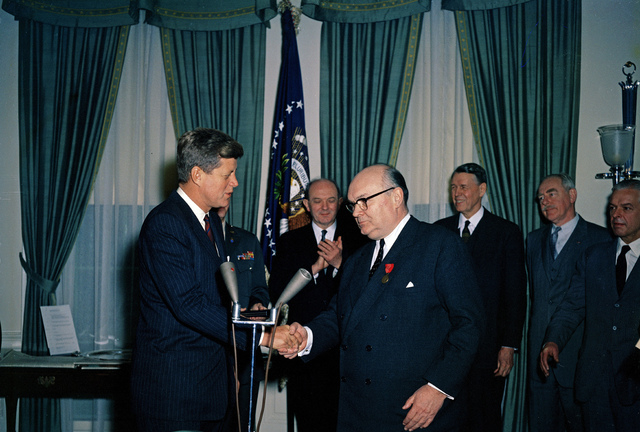Women’s Institute of Domestic Arts and Sciences
by Carol Wood, First published for the January/February 2010 issue of Finery Sewing has waxed and waned in the hearts and homes of American women over the past century. The home sewing machine was available from the 1850’s and considered an integral piece of furniture to a well-appointed home. Despite these machines making home garment production even easier, the interest in learning to sew and home garment production dwindled. As […]
Book Review: Betsy-Tacy Series
by Catherine Scholar, First published for the January/February 2011 issue of Finery Why review a beloved children’s series for a costume newsletter? It’s a fair question, one the author partially answered herself: “in these Betsy-Tacy stories, I love to work from real incidents.” The Betsy-Tacy books were based closely upon author Maud Lovelace’s own life, and almost all of Betsy’s […]
Carnival in Venice
The Costume IS the Performance by Shelley Monson, First published for the January/February 2011 issue of Finery Today we use the word “carnival” to mean much the same as circus, but in the past it referred specifically to the celebration of the holiday Shrove Tuesday, the last day before Lent. Shrove Tuesday, known as Mardi Gras or Fat Tuesday in […]
A Brief and Opinionated Survey of the Caftan
by Sandy Vrooman, First published for the January/February 2011 issue of Finery In the beginning, we wore clothing simply to survive. We wrapped ourselves in skins. Eventually, we learned how to tie them together, and weave. For the first modifications, we made a hole in a garment to slip it over the head and around the neck. Next maybe we […]
Gilded Age Outerwear
by Shelley Monson, First published for the November/December 2010 issue of Finery The period known in America as the Gilded Age, roughly 1870 to the First World War, saw repeated radical changes in the silhouette of women’s clothing, moving through first bustle, natural form, second bustle, into the triangular shapes of the 1890s and the flowing curvilinear styles of the […]
Skirting Issues
by Catherine Scholar, First published for the November/December 2010 issue of Finery The most visibly striking part of mid-19th century women’s dress is the wide, crinoline-supported skirt. Seriously, what little girl hasn’t dreamed of waltzing around a ballroom like Cinderella in a big, poofy dress? Skirts of this period (1830-1865, although the hoop didn’t come in until 1857) aren’t difficult […]
Book Review: Elephant’s What?
by Betsy Hanes Perry, First published for the September/October 2010 issue of Finery Elephant’s Breath and London Smoke: Historic Colour Names, Definitions, & Uses, edited by Deb Salisbury, is a sorely needed resource; anybody who’s spent time reading old fashion magazines has been frustrated by descriptions such as “a dress of serpent-gray silk”, which would have been transparent to the […]
Down the Rabbit Hole
by Carol Wood, First published for the July/August 2010 issue of Finery Nothing says “Alice in Wonderland” more than a blonde in a light blue dress. A light blue ball gown will get you as far as Cinderella, a slinky blue dress will even get you to the Devil, and a light blue gingham pinafore will get you all the […]
Mad Style
by George McQuary, First published for the July/August 2010 issue of Finery The “Age of Optimism”, 1960-1963, was the last gasp of formality in everyday men’s wear. During the Eisenhower and Camelot/Kennedy eras, men wore slim two- or three-piece suits, slim-fitting white shirts, skinny ties with tie bars and pocket squares. Art Deco-era suits can easily pass for mid-century, as […]
Accessories Make the (Victorian) Man
by Virginia Solomon, First published for the May/June 2010 issue of Finery Modern men have streamlined their attire so extremely that the only accessories ever seen are a handkerchief in the pocket and perhaps cuff links. Nothing else distinguishes one’s class, affluence and style. But in the Victorian/Edwardian Era, the numerous accessories one carried and wore could easily aid the […]









